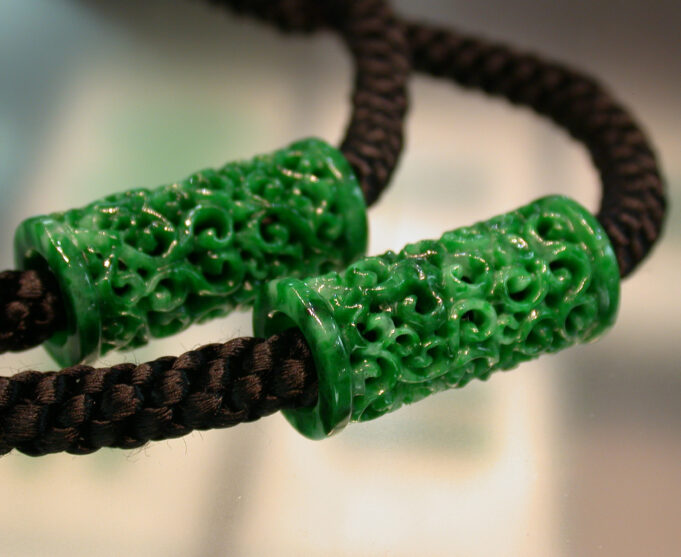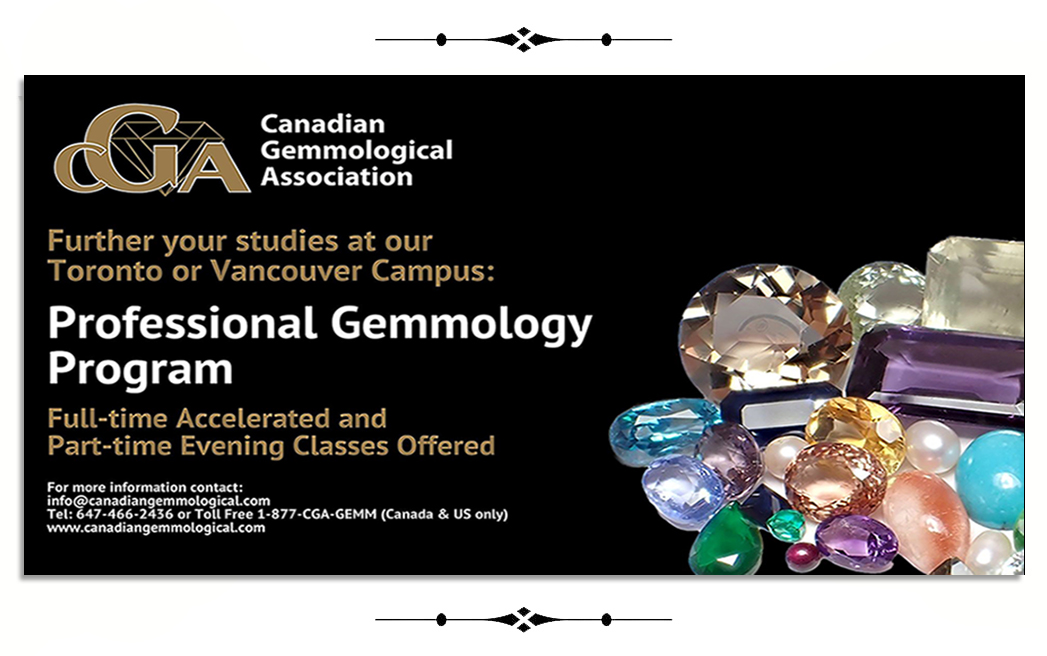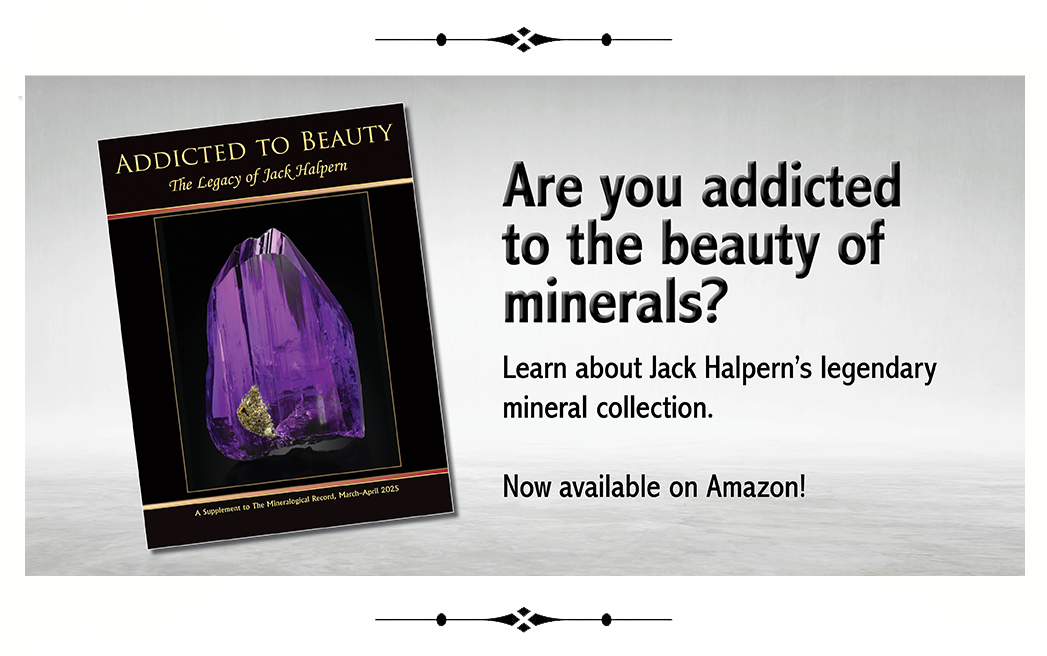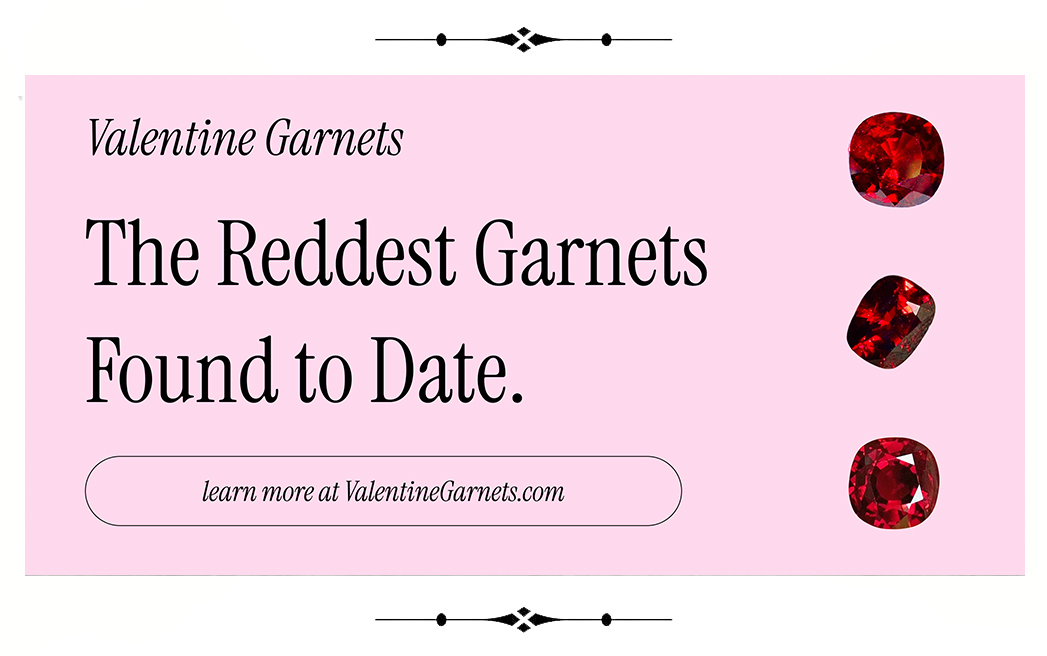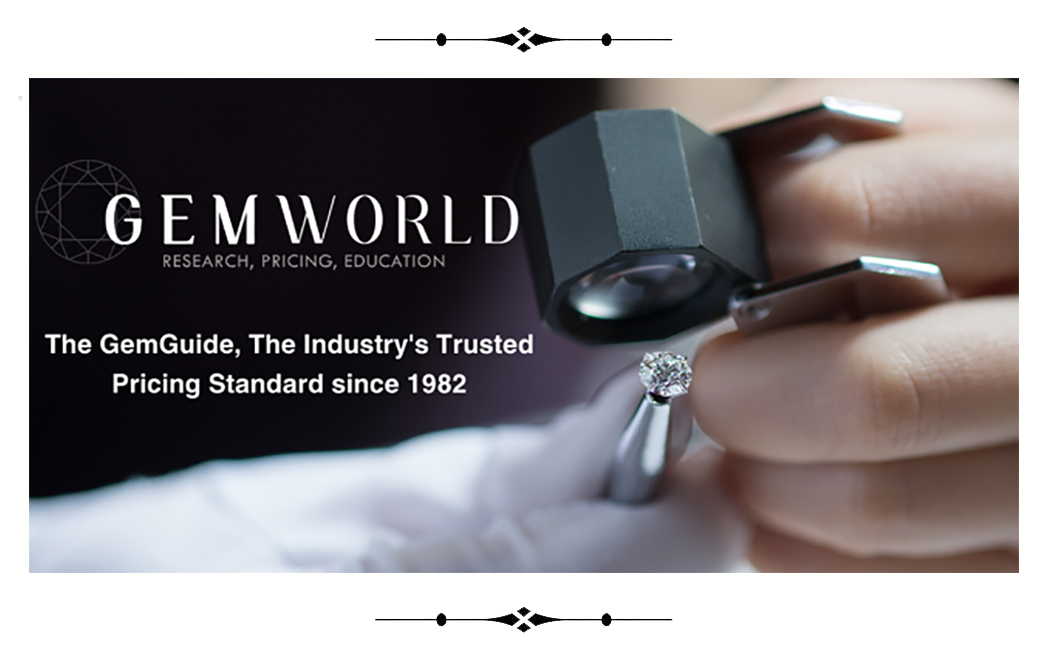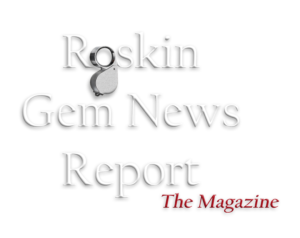GIA Adds Fei Cui to Jade Reports: What is Fei Cui?
Gary Roskin
Roskin Gem News Report
GIA Adds Fei Cui to Jade Reports: What is Fei Cui?
Gary Roskin
Roskin Gem News Report
The Chinese call it Fei Cui. The West calls it Jadeite. But it’s much more complicated than just name calling. And here’s why.
Hong Kong and the HKJSL – Fei Cui Classification
From what we understand, prior to the 1980s, Burmese Jade (aka Jadeite), was never chemically enhanced. This jade was of much better quality than any other “jade” in the market found elsewhere (with maybe a few rare exceptions), including nephrite, and any other substitute such as serpentine, chalcedony, etc.
Within the past few decades, because of its superior quality and its importance in the East, it has been known in the Asian trade as “Fei Cui,” separating it from all other jade and jade-like materials.
However, according to the Hong Kong Jade & Stone Laboratory, it was during the early 1980s when the Hong Kong jade market was “flooded with chemically treated and resin impregnated Fei Cui (known now as Type B in the industry). It was difficult to distinguish Type B from Type A (natural unenhanced Fei Cui) by standard gemmological testing, and consumers’ confidence was affected.”
Therefore, the Hong Kong Jewellery & Jade Manufacturers Association (formerly known as the Hong Kong Jade and Stone Manufacturers Association) established the Hong Kong Jade & Stone Laboratory Ltd. (HKJSL) in 1993. Equipped with the most advanced instrumentation, including an infra-red spectrometer, the experienced gemmologists of HKJSL can test Fei Cui accurately and issue authenticated certificates to the public.
So this is Problem #1
Now, instead of one natural unenhanced jadeite (Fei Cui), we have 4 jadeites (4 Fei Cui) with varying degrees of treatment.
#1 TYPE A (NATURAL FEI CUI)
Refers to Natural Fei Cui which has not been subjected to any form of chemical treatment.
Note: To polish Natural Fei Cui with colourless wax, which does not cause any damage to the crystalline structure of the Fei Cui, shall not be classified as a chemical treatment.
#2 TYPE B (CHEMICALLY TREATED AND RESIN IMPREGNATED FEI CUI)
Refers to Fei Cui which has been chemically treated and resin impregnated.
#3 TYPE C (DYED FEI CUI)
Refers to Fei Cui which has been treated with dye.
&
#4 TYPE B+C (CHEMICALLY TREATED, RESIN IMPREGNATED AND DYED FEI CUI)
Refers to Fei Cui which has been chemically treated, resin impregnated and dyed.
Three Minerals in One – a Rock
Problem #2
Problem number two is that what we have referred to as simply “jadeite” can be three different minerals – It’s not necessarily just “jadeite.”
Science – 1 minute
“Fei Cui”, aka Jadeite, is a pyroxene (a rock-forming silicate, generally containing calcium, magnesium, and iron, typically occurring as prismatic crystals.)
Nephrite, also “jade,” is an amphibole (a rock-forming silicate or aluminosilicate, typically occurring as fibrous or columnar crystals.)
Nephrite may be tougher than Jadeite because of its fibrous structure, but Jadeite, because of its prismatic crystalline make-up, can have better color and transparency, and this is what makes jadeite so much more important!
Call it Jadeite
Whatever you call Jadeite, it’s a rock. A very pretty rock. And in some cases, a very valuable rock. But none-the-less, a rock.
Jadeite is a rock made up of three minerals, Jadeite, Omphacite, and Kosmochlor. This is what we (outside of China) know as Jadeite, “the imperial gem.” Our “jadeite” then may be composed of one or all of those three minerals (plus commonly additional minerals). The East, mostly China, Hong Kong and parts of Asia, simply calls it all “Fei Cui.”
Laboratory Studies
We reached out to Ken Scarratt, education director for the CIBJO Academy, (CIBJO – the World Jewellery Confederation,) who gave us a reference to the Gemmological Association of Hong Kong that may help us understand Fei Cui.
The key information from “Standard Methods for Testing Fei Cu for Hong Kong,” as well as the actual published document states:
Definition of Fei Cui – Jadeite Jade, Omphacite Jade, Kosmochlor Jade
- Fei Cui is a granular to fibrous polycrystalline aggregate, which is composed solely, or principally of any of the following or any combination of the following: Jadeite, Omphacite and Kosmochlor.
- Fei Cui, Jadeite Jade is a granular to fibrous polycrystalline aggregate. Its major mineral component is Jadeite (NaAlSi2O6). Other minerals such as Omphacite and Kosmochlor may also be present.
- Fei Cui, Omphacite Jade is a microgranular to microfibrous polycrystalline aggregate. Its major mineral component is Omphacite [(Ca,Na)(Mg,Al)Si2O6]. Other minerals such as Jadeite and Kosmochlor may also be present.
- Fei Cui, Kosmochlor Jade is a granular to fibrous polycrystalline aggregate. Its major mineral component is Kosmochlor (NaCrSi2O6). Other minerals such as Jadeite and Omphacite may also be present.
In essence, what this says is that this material we used to lump into the category of Jadeite, is actually one of three materials, and all under the umbrella of “Fei Cui.”
Retail – It’s simply “Fei Cui”
Most retail jewelers and consumers in China refer to this material simply as Fei Cui. No need to differentiate between Jadeite, Omphacite, or Kosmochlor. Its beauty is in how it appears. Transparency, evenness of color distribution, color, luster, and personal taste will dictate value.
But there is the matter of treatment, and the Chinese consumer is very aware of the difference.
GIA’s Jade Report
GIA (the Gemological Institute of America), whose slogan is “the world’s foremost authority in gemology,” and the world’s leading gemological laboratory, is introducing “Fei Cui” to their laboratory Jade Report. It has been updated with “additional gemological information, and a sleek, user-friendly layout to enhance the overall report experience for both industry professionals and consumers.”
“We made these improvements to our ‘Jade Report’ recognizing its history, symbolism and overall importance to consumers,” said Tom Moses, executive vice president and chief laboratory and research officer at GIA.
Adding Fei Cui
The new GIA Jade Report provides a dedicated section under “Results” that details the Jade “type,” when appropriate.
In addition, the commonly used trade term “Fei Cui” will be listed in the comments section when appropriate with the explanatory note stating that “Fei Cui” refers to jadeite, omphacite, and kosmochlor.
Speaking to Shane McClure, global director of colored stone services at GIA’s world headquarters in Carlsbad, California, about the new addition of Fei Cui to the report, he pointed to a few new items that we should note:
First off, to be clear, the term “Fei Cui” has nothing to do with color or quality, notes McClure. So, what may have been true prior to the 1980s (as we talked about earlier) Fei Cui is simply the umbrella for the rock made up of jadeite, omphacite, and kosmochlor.
Still Listing Jadeite
GIA still has the results as to whether the material is jadeite, or omphacite, etc., along with a type designation, as to whether the material has been treated in any fashion (listed below on the sample report). This will apply to all Fei Cui, with exceptions for any challenges, such as color origin on lavender jadeite, which in some cases can be impossible to identify. (There are also color origins for oranges and yellows that are difficult to determine as well.)
McClure notes that, “under the comments section, we are saying ‘Known in the trade as Fei Cui.’ And then on the third panel of the report, we have a short statement, ‘The term ‘Fei Cui’ refers to jadeite, omphacite, and kosmochlor.’ This is followed by the definitions of Fei Cui Type, not ‘Jade’ Type because this does not apply to nephrite.” McClure emphasized that GIA still considers Fei Cui a Trade Term, not a mineralogical term.
“We want to make our reports useful to those who are using them. And they are using the term Fei Cui almost exclusively in China and in Hong Kong, along with much of the Asian market.” GIA recognizes that the majority of Jade is bought and sold in China. Fei Cui is therefore common terminology in a significant part of the world. But even though Fei Cui has been added to the GIA Jade report, GIA maintains the Species line to list whether the “Jade” is Jadeite, Omphacite, or Kosmochlor.
Omphacite is Still a Question
While the mineral Jadeite is clearly listed “Jadeite Jade,” McClure also notes a challenge with Omphacite. There is some omphacite that GIA will call “Omphacite Jade,” while some omphacite is simply listed as Omphacite, but still on a Jade report. According to McClure, this is an area that they are still working on. And this is not a question just for GIA. This is a challenge for many labs as our conversation with Dr. Emmanuel Fritsch below will attest.
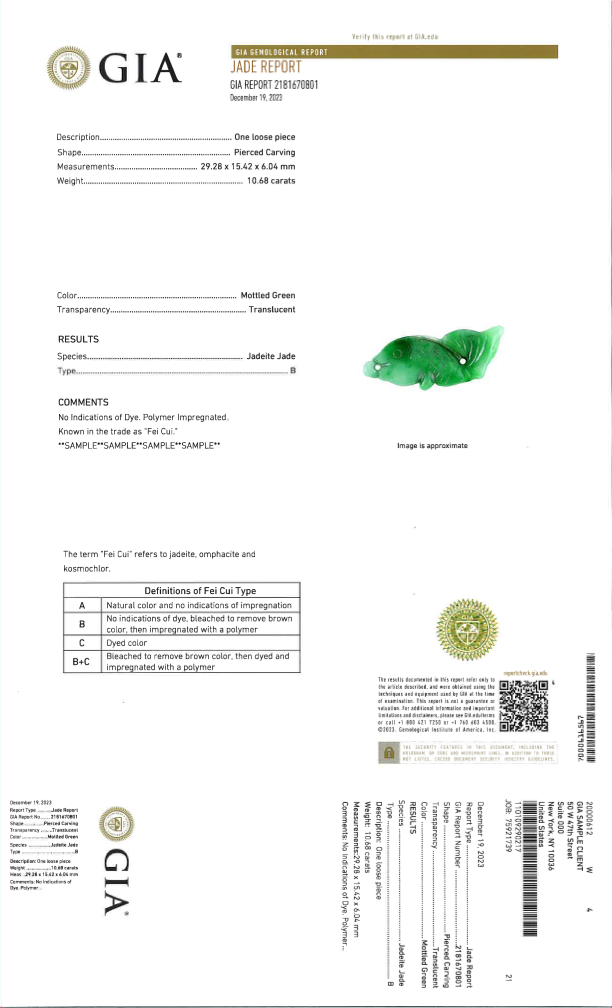
Research From Nantes
We reached out to Dr. Emmanuel Fritsch, professor of physics and research scientists specialized in gem materials, at the University of Nantes, Institut des Matériaux de Nantes. Dr. Fritsch has recently returned from Japan where he studied a high quality jadeite deposit.
A Plug For DUG
“Did you know that there is good quality jadeite in Japan? You would learn that in the DUG program. We recently visited this remarkable, very scenic deposit of gem quality jadeite in central Japan, at the limit of two tectonic plates. It is little known because there is only very little commercial mining. It is mostly a protected park (Itoigawa Unesco Global Geopark) with the Fossa Magna Museum, where you can see some remarkable specimens.
“There is green, lavender, white and even blue jadeite (actually omphacite) and some black specimens (colored by graphite). It appears to be the oldest jadeite culture in the world (starting approx. 5000 BC)”
Fritsch & Fei Cui
“I have not really delved into ‘Fei Cui,'” notes Dr. Fritsch. “Many gemologists, including the CIBJO laboratory commission, are not comfortable with the term ‘Fei Cui’ precisely for its lack of a clear definition. If one presents it as a mix of jadeite, omphacite and kosmochlor, one needs to define omphacite more precisely. Omphacite is an intermediate term that mineralogists have some difficulty defining.”
One point of discussion, notes Fritsch, is that omphacite from Guatemala looks very much like top quality Jadeite from Burma, and some laboratories do not call it jade. Another issue raised is that one cannot easily tell if a specimen is jadeite or omphacite (hence you need an “umbrella” term like Fei Cui), and, according to Fritsch, this is simply not true in most cases! “Raman is very useful and can determine most.” (Fritsch does say that there are, perhaps, exceptions, or some rare, difficult cases, where identification may be a greater challenge.)
SSEF – A Comparative Study of Jadeite, Omphacite and Kosmochlor Jades
In a study from 2014, the Swiss Gem Lab SSEF was featured in the Gem-A Journal of Gemmology stating that, “The use of the term ‘fei cui’ by the Hong Kong government to refer to a granular to fibrous polycrystalline aggregate composed of jadeite, omphacite and/or kosmochlor is in accordance with Chinese tradition. However, we feel that the terms jadeite jade, kosmochlor jade and omphacite jade are more in-line with the mineralogical and scientific nomenclature of jade identification. Nevertheless, the term ‘fei cui’ can be added as an optional modiier. In such a case, an example of this terminology would be ‘jadeite jade (fei cui)’—rather than the wording ‘fei cui (jadeite jade)’ that is currently used in Hong Kong. In English, the latter format could imply that all ‘fei cui’ is jadeite jade, which would be misleading.”
Lotus Gemology Laboratory Reports Go Towards the East
In July 2023, Lotus Gemology, professional gem lab located in Bangkok, Thailand, revised their lab reports for pyroxene jades, “replacing the word ‘jadeite’ with the traditional Chinese term ‘fei cui.'”
“Recent studies show that the gem known throughout the non-Chinese world as ‘jadeite’ jade is actually a rock composed of three major mineral species – jadeite, omphacite and kosmochlor. These components grow in a submicroscopic aggregate with grains so small that standard lab instruments cannot easily determine the true composition. As a result, China’s gem trade has adopted the traditional term ‘fei cui’ (pronounced ‘fay choy’) as an umbrella name to cover all the pyroxene jades.”
[Since July of 2023, Lotus Gemology’s reports have replaced the term “jadeite” with “fei cui.” Future editions of Jade: A Gemologist’s Guide will do the same. For more on this subject, see: From Fei Cui to Jadeite and Back • Questions and Answers]
Stone Group Labs – Why Fei Cui?
Stone Group Labs (SGL) in Jefferson City, Missouri, tests enough jade to understand the use of the term Fei Cui, but prefers mentioning it only in their Lab Comments:
“Jadeite, Omphacite and Kosmochlor are distinct yet closely related minerals, commonly intergrown. Western countries refer to all as Jade and by their more specific names when identification is possible. In Asia, they may be collectively referred to as Fei Cui. Kosmochlor may also be referred to as chromium jadeite. Stone Group Labs labels them by their primary component, however jadeite may contain kosmochlor and/or omphacite, while omphacite or kosmochlor may contain significant amounts of jadeite.”
Cara Williams of SGL acknowledges the cultural aspects of jadeite, but questions the nomenclature. “Why are we all investing in the best equipment, only to back track and call it by a vague cultural term and play down what we can know? Omphacite is of a lower hardness. Jadeite’s higher hardness is one of the traditional reasons given for its value in early history.”
“Some may prefer being able to lump it all together as Fei Cui, especially if they specialize in other than the top grades. There is also a lot of omphacite coming from the Guatemalan deposits, with much of it being cut in Asia and with no distinction in origin being offered.”
“Kosmochlor, on the other hand, should not suffer from being labeled as ‘kosmochlor’ or as ‘chromium jadeite’ – it is closer to jadeite, and only its over-dark shades will cause it to be discounted accordingly. While omphacite can look no different than jadeite, most often it approaches the look of nephrite, and gets discounted accordingly. By labeling it simply as ‘Fei Cui,’ dealers can avoid lengthy explanations and possibly ask more.”
CIBJO
Coming back to CIBJO, Scarratt does go on to state that, “CIBJO has been entertaining constructive discussions on the use of this Chinese terminology for the western world during the last three Congresses, as has the CIBJO Gemmological Commission’s Varietal Names Committee in-between Congresses. ‘Fei Cui’ was entered into the CIBJO Gemstone Blue book as a trade or commercial name some time ago (see page 59 of the current on-line version).”



